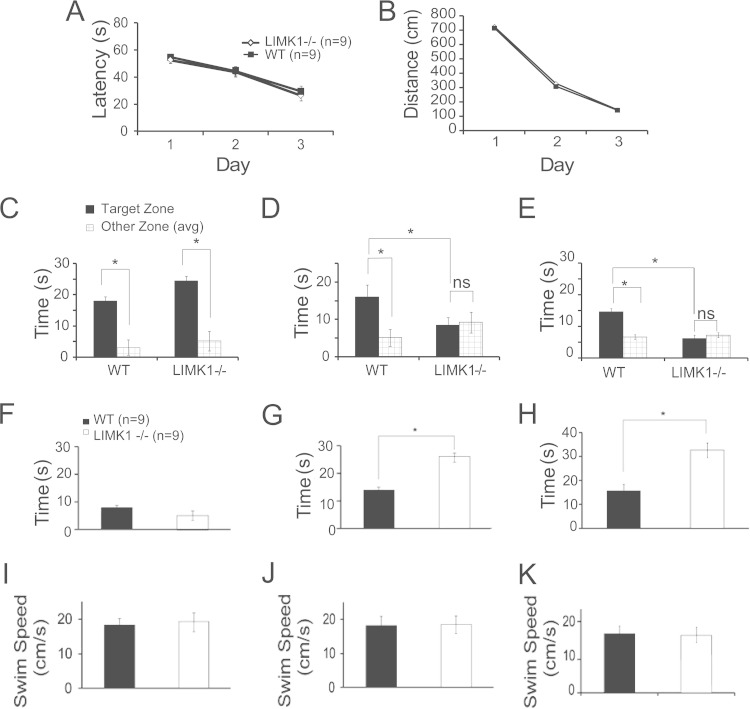FIG 1.
Selective deficits in LTM in LIMK1−/− mice in the water maze test. (A) Learning acquisition graph showing that both LIMK1−/− mice and their WT littermates were able to locate the hidden platform equally well during the 3 days of training. (B) Learning acquisition graph showing the distance traveled to locate the platform during the training period. (C) Results of the probe test carried out 2 h after the 3rd day of training showing that both LIMK1−/− mice and their WT littermates exhibited a significant bias toward the target zone, suggesting that STM was intact in LIMK1−/− mice. (D) Results of the probe test done at 48 h posttraining showing that WT mice but not LIMK1−/− mice exhibited a significant bias toward the target zone. (E) Results of a probe test done at 1 week posttraining showing that WT mice but not LIMK1−/− mice exhibited a significant bias toward the target zone, suggesting a deficit in LTM in LIMK1−/− mice. (F) During the probe test carried out 2 h after the training, neither LIMK1−/− mice nor WT mice spent a considerable amount of time searching around the perimeter of the water maze. (G, H) During the probe test carried out 48 h (G) and 1 week (H) after the training, LIMK1−/− mice spent significantly more time than the WT control mice searching around the perimeter of the water maze. (I to K) The swim speed recorded during the probe test at 2 h (I), 48 h (J), and 1 week (K) after the training showed no significant differences between LIMK1−/− mice and their WT littermates. Error bars represent SEMs. *, P < 0.05; n, number of animals; ns, no statistical significance.

